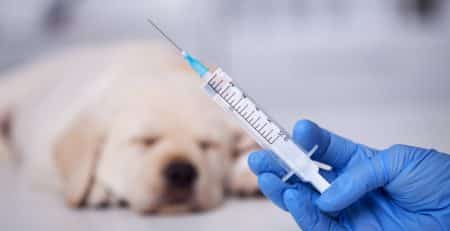To neuter or not to neuter
Jack is giving you a piercing look that bores straight into your soul. You blush. Could he really know what’s going through your head? What would your dog think if he knew you’re mulling over the possibility of parting him from his family jewels? Would he really mind? Would he understand the necessity? Is it really necessary? Everyone around seems to think that it is in your dog’s best interest for it to be neutered, but … is it really the case?
The catch and neuter revolution in the Western world has gained momentum, and it is currently at its peak. People nowadays don’t think twice about neutering their dogs. It’s the most logical thing to do! Asking whether neutering is necessary seems to come as an afterthought. Society seems to be sold on this idea, and anyone willing to debate the issue is soon glared down to a hush.
Why neuter?
If you have no intention of breeding your dog, or live in an area highly populated by dogs where your dog can run away and get up to no good resulting in an unwanted litter of puppies, then perhaps it is better to neuter your dog for the sake of all parties involved. When dogs have litters they very rarely give birth to one pup. Litters are usually big enough to make distributing all the puppies to a good home a very tough job.
Neutering your dog at an early age will also diminish or eliminate your dog’s natural urges to look for a mate. Intact dogs can often show a lot of undesirable behaviour like humping objects and people. Neutering or spaying will usually prevent dogs from trying their darn best to escape when in heat or when aware of a potential mate in the vicinity.
Intact bitches will also bleed when in heat. Most people find this to be a great inconvenience as it can make a bit of a mess, leaving spots of blood all over an otherwise spotless house. However, this can be fixed by making your dog wear a diaper designed for the sole purpose of containing such unwanted secretions.
Neutering also makes it impossible for the occurrence of cervical or testicular cancer. It also eliminates the occurrence of pyometra in bitches when the uterus is removed in its entirety.
Why not?
Although neutering is in most cases a good idea, it is also usually a surgically invasive procedure. Going under general anaesthetic has its own risks, and although significant advancements have been done in the field of anaesthesia one should still not think lightly of it. Some dogs might be particularly sensitive to the anaesthetics being used and might experience some complications during the surgical procedure. Others are totally unfit to go under general anaesthesia because of certain health issues like heart problems. In such situations, male dogs have the option of chemical castration. Unfortunately, this is not an option for female dogs. Chemical castration involves the direct injection of chemicals in the male dog’s testicles; a procedure that cannot be done on a female dog’s ovaries.
Incontinence is also a subject that often that crops up when discussing neutering. It is often the case that neutered dogs develop incontinence as a result of neutering. In both male and female dogs this occurs due to a decrease in hormone concentrations that are usually produced by the dog’s ovary or testes. Besides piloting the dog’s reproductive system, these hormones are also responsible in maintaining the muscle tone of the dog’s urinary system and therefore help the dog control its bladder thus avoiding any involuntary release.
Obesity is another common issue after neutering. Having lost their intactness, resulting in a hormonal imbalance; dogs of both genders usually end up with a lower calorie requirement. The problem is when owners give in to their dog’s seemingly insatiable appetite and overfeed their dog without taking this reduced calorie requirement into account.
Are there any other alternatives?
As a matter of fact, there are a number of other alternatives! Besides chemical castration as mentioned above there are other surgical procedures such as tubal ligation. One can also find hormonal treatment which is the canine equivalent of the contraceptive pill. Subcutaneous implants are also becoming commonplace as more owners decide to use this method preferring a less hands on approach.
Tubal ligation involves the closing of the female dog’s uterine horns in order to make it physically impossible for the male sperm and female ovum to meet. Although this still involves going under anaesthetic, the ovary remains within the female’s body and therefore this procedure results in less hormonal fluctuation and therefore no significant changes. The pill option is promising; however, it is still too complicated to be used properly by the average Joe and comes with a considerable number of potential side effects (including pyometra, cancer, diabetes, etc). Having said this, the pill is a reversible method which is best suited for breeders that wish to have a level of control over the reproduction of their dogs. The contraceptive subcutaneous implant currently seems to be the most effective of all the contraceptive methods for dogs besides neutering. The implant prevents pregnancy by constantly releasing hormones over an extended period of time. It seems to have no side effects and its effectiveness lasts for over a year.
Research concerning contraceptive methods in animals is still in its infancy. Until then, dog owners, although currently presented with more options than ever before, still need to seriously consider the option of surgical neutering. However, things seem to be improving at a steady pace. We can all hope that in the near future surgical neutering will be one of the many options that dog owners can choose from.






















